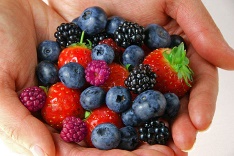What goes into the body dictates what comes out. Did you know your poop may actually be a useful reference tool for you to judge the quality of your diet? Take some time to look into the toilet before you flush; you may be surprised at the contents.
Poop
Poop is an important indicator of health. Your food choices have a lot to do with whether or not you make good poop or bad poop. A diet rich in fruits and vegetables promotes healthy bowel function because of the presence of dietary fiber. Dietary fiber eases the elimination of waste products.
Drinking enough water or fluids is also essential to making good poop. Adding fluids helps regulate bowel movements and aids in the digestion and absorption of nutrients.
What’s in your poop?

Poop is about 75% water. The other 25% includes fiber, bacteria, and mucus. Soluble fibers you eat, such as the white part of an apple or pear, turn into a gel-like substance that helps hold your poop together. Insoluble fibers (seeds, strings, peels, pulp, bran) are harder to break apart and may actually come through your poop partially undigested.
Color
An unusual color of poop (not brown), may be caused by something totally normal; or an indication of a more serious problem.
• Red: Eating beets, cranberries, red gelatin, or red velvet cake may cause red poop. However, bright red poop may also signal bleeding in your digestive system. Common reasons for that include hemorrhoids, a stomach ulcer, or colon cancer.
• Green: Green food coloring, green leafy vegetables, iron supplements, or a C dif infection.
• Yellow: Yellow poop can indicate problems with the gallbladder and/or liver. Bile salts from the liver give poop its brown color, so when there is a lack of bile, your stool may be yellow.
• White or gray: White or gray poop may reflect a lack of bile, which can indicate serious problems such as hepatitis, cirrhosis, a blocked bile duct, or pancreatitis.
Shape
If your poop is small and hard-to-pass, you are most likely constipated. Common reasons include a lack of fiber and water in your diet. Stools too loose? You might be suffering from celiac disease, Crohn’s disease, bowel cancer, irritable bowel syndrome, inflammation of the pancreas, or just have a viral, bacterial or parasite infection. If your poop is pencil-thin, the reason may be something as simple as constipation, or as serious as a bowel obstruction. Healthy poop is usually 1-2 inches in diameter.
Weight
Poop should sink to the bottom. If your poop floats instead of sinks, it may be trying to tell you there is too much fat in your diet. It might also mean you have an issue in your pancreas that’s preventing digestive enzymes from breaking down the fat in your food. Or, it could just be a food allergy or infection that is damaging the lining of your intestine.
Smell
If your poop smells like rotten eggs (sulphur), and you have diarrhea, you may have a parasitic infection called giardia. Other odiferous contributors include colitis, Crohn’s Disease, and celiac disease.
Time
Digestion can take anywhere from 24-72 hours. There is no “normal” when it comes to how many times one should poop daily. Your body develops its own routine, and that is normal for YOU!!
Farting
Farting is a sign that good bacteria is breaking down and fermenting your food. Passing gas 10-18 times per day is normal.
Bottom Line
If there is anything that looks a bit unusual about your poop or pee, please consult your doctor for a proper assessment of your health.
Written by: Donna Green, Family & Consumer Sciences Educator, Ohio State University Extension, Erie County, Erie Basin EERA, green.308@osu.edu
Reviewed by: Beth Stefura, Family & Consumer Sciences Educator, Ohio State University Extension, Mahoning County, stefura.2@osu.edu
Sources:
http://www.mayoclinic.org/stool-color/expert-answers/faq-20058080
http://www.webmd.com/women/features/digestive-problems
http://www.nlm.nih.gov/medlineplus/ency/article/003132.htm









